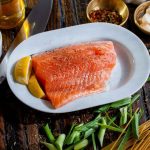Navigating the vast array of dietary advice can be overwhelming, often leaving individuals confused about what constitutes a healthy diet. Fortunately, food guides provide a valuable roadmap to help us make informed choices and achieve optimal nutrition. In this article, we explore the importance of food guides as a tool for healthy eating and discuss strategies for effectively navigating their recommendations.
Understanding the Purpose of Food Guides: Food guides are comprehensive resources developed by health authorities to educate and guide individuals in making healthier food choices. These guides are based on scientific research and aim to promote balanced diets that meet nutritional needs, prevent chronic diseases, and support overall well-being. They typically offer guidelines on food groups and portion sizes, emphasizing the importance of variety, moderation, and balance.
Key Principles of Healthy Eating: Food guides commonly emphasize key principles for healthy eating. These include consuming a variety of nutrient-rich foods from major food groups, such as fruits, vegetables, whole grains, lean proteins, and dairy or alternative sources of calcium. They also encourage limiting the intake of added sugars, saturated fats, and sodium. By adhering to these principles, individuals can ensure they are obtaining essential nutrients while reducing the risk of chronic diseases.
Customizing the Food Guide for Individual Needs: While food guides provide general recommendations, it is important to tailor them to individual needs and preferences. Factors like age, gender, activity level, dietary restrictions, and cultural considerations all play a role in determining dietary requirements. For example, athletes may require more protein and carbohydrates, while those with certain health conditions may need to limit sodium or avoid specific allergens. Personalizing the food guide ensures that it aligns with one’s unique circumstances and helps achieve optimum nutrition.
Practical Tips for Navigating the Food Guide: To effectively navigate the food guide, the following strategies can be helpful:
- Familiarize yourself: Take the time to thoroughly understand the concepts and recommendations outlined in the food guide. Educate yourself on portion sizes, serving suggestions, and guidelines for each food group.
- Plan your meals: Incorporate elements from each food group into your meal planning. Aim for a variety of colors, textures, and flavors to ensure a balanced and enjoyable diet.
- Read food labels: Become proficient at reading nutrition labels, paying attention to the ingredients, serving sizes, and nutrient content. This will help you make informed choices when purchasing packaged foods.
- Seek professional guidance: If needed, consult with a registered dietitian or nutritionist who can provide personalized advice based on your unique needs and goals.
- Incremental changes: Gradually introduce healthier options and substitutions into your diet. Small, sustainable modifications are more likely to be successful in the long term.
- Practice mindful eating: Slow down, savor your meals, and pay attention to your body’s hunger and fullness cues. This helps develop a healthier relationship with food and promotes satisfaction.
Food guides serve as invaluable tools for navigating the complex world of healthy eating. By understanding their principles and tailoring recommendations to individual needs, we can achieve a balanced and nutritious diet. Remember to view food guides as a flexible roadmap rather than rigid rules, and approach dietary changes with patience and mindfulness. By using the food guide effectively, we can take charge of our nutritional well-being and pave the way towards a healthier lifestyle.















Add Comment